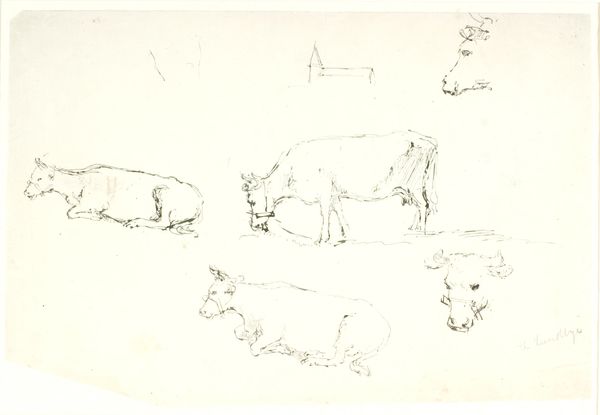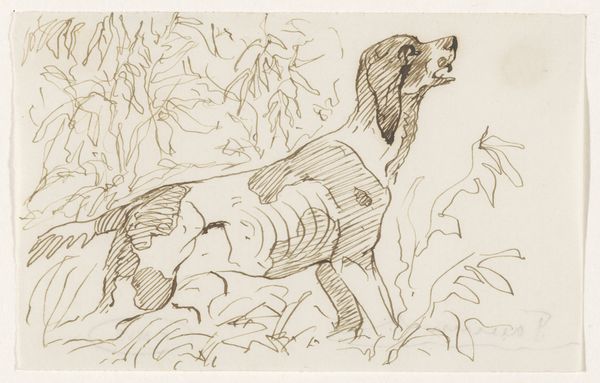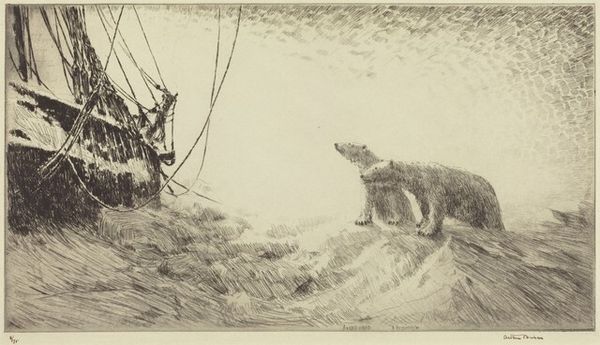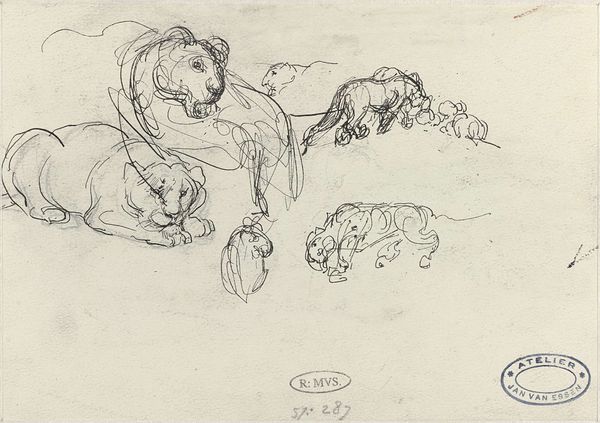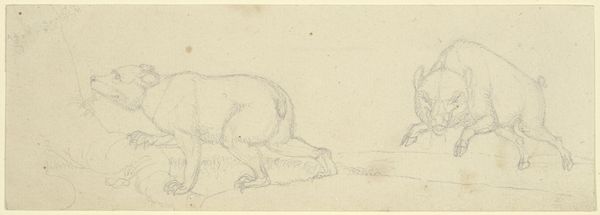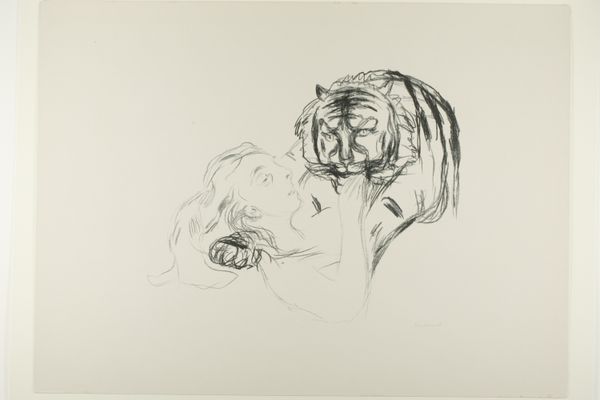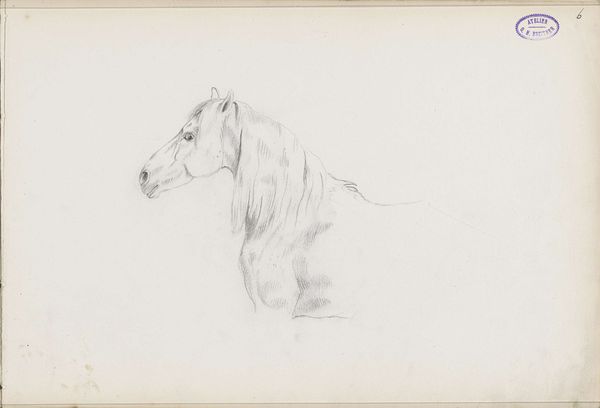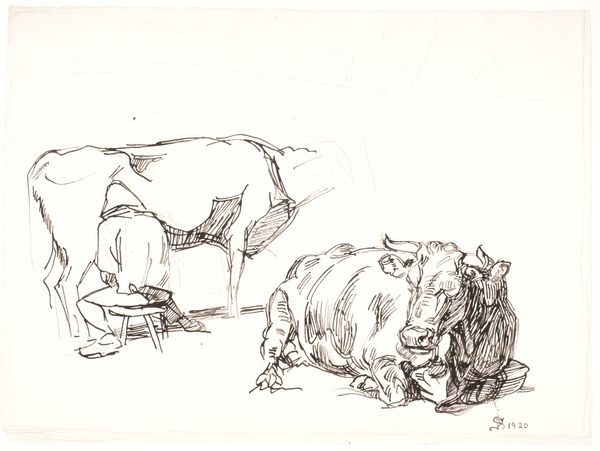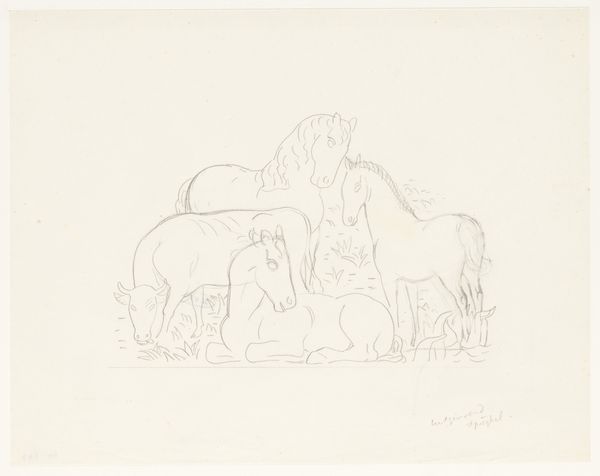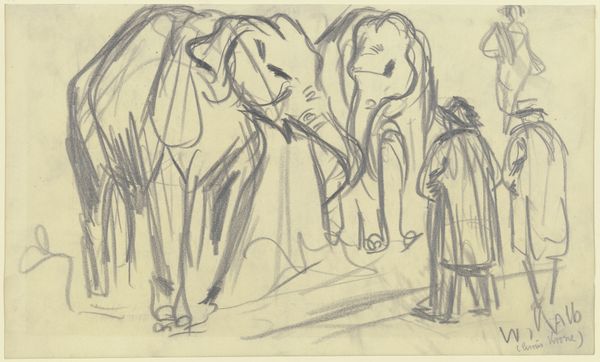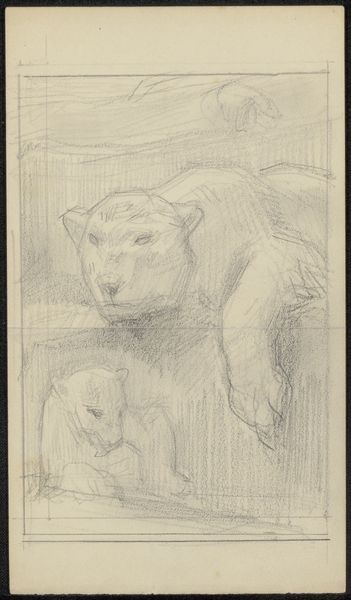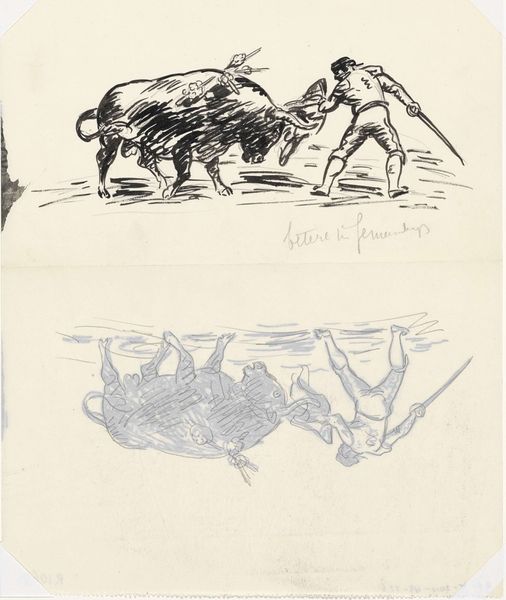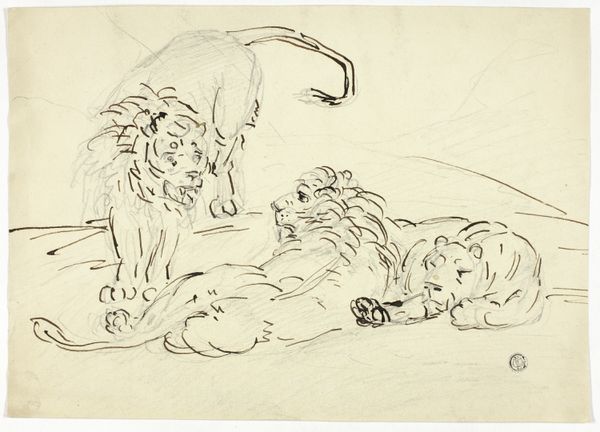
drawing, lithograph, print, paper, ink
#
drawing
#
ink drawing
#
lithograph
# print
#
landscape
#
figuration
#
paper
#
ink
#
expressionism
#
line
Dimensions: 235 × 470 mm (image); 481 × 651 mm (sheet)
Copyright: Public Domain
Curator: Looking at Edvard Munch's lithograph, "The Tiger and the Bear," created between 1908 and 1909, now at the Art Institute of Chicago, one is struck by the rawness of its creation. The starkness of the lithographic ink on paper. Editor: It feels almost like a premonition. I’m getting a sense of dread mixed with inevitable confrontation. The composition, these two beasts ready to clash, under this ghostly sketched forest… something significant is about to happen. Curator: Consider Munch's materials here – ink, paper, and the lithographic stone. Each plays a crucial role in defining the final aesthetic. The directness of the ink lines showcases the raw power, minimizing layers for a focus on pure mark-making. Also the means of production - how widely available would a print like this be at the time? What was the function of producing in this format versus other mediums? Editor: Indeed, let's place this work in the context of its creation, early 20th century Europe. What do you think about seeing it through the lens of societal anxieties about race, class, and the struggle for survival at that time, given the stark dichotomy of the powerful bear versus the predatory tiger? Curator: Absolutely, it’s impossible to ignore the artist’s role as a worker crafting a narrative for consumption. Lithography at the turn of the century allowed Munch to reach a broader audience. The subject choice of animals, a classic symbolist trope, is then mediated by the reality of its material existence – ink applied and consumed. What choices are consumers making as they bring artwork such as this into their homes? Editor: Right, and who is he reaching with this work, who sees their own struggles reflected? Is this perhaps about colonialism and imperialism and about struggles between powerful colonial empires? The stark, unadorned background serves to amplify this struggle for resources or domination—perhaps symbolizing territory, identity, and even the psychological struggles within the human condition itself. Curator: It makes me think also about labor in art making. There is a certain brutal efficiency here. We aren't seeing years of detailed brushwork, but direct marks. So what labor is legitimized? It leads one to consider questions about accessibility. Is that partly why you gravitate towards the activist interpretation of the animals? Editor: Possibly. The print isn't merely an aesthetic experience. It's a symbol fraught with implications for social change. Examining whose stories are represented here, even if veiled through symbolism, provides insights into broader cultural ideologies. Curator: Thinking now about what it can do to historicize, while recognizing the historical conditions of the materials, offers an insight into the economic factors influencing art. Editor: For me, "The Tiger and the Bear" makes a clear appeal for a more equitable consideration of the socio-political powers at play during Munch's lifetime, while using this symbolic and emotive struggle to call for equality across lines of gender, race, class, and power, inviting reflection on social justice then and now.
Comments
No comments
Be the first to comment and join the conversation on the ultimate creative platform.
